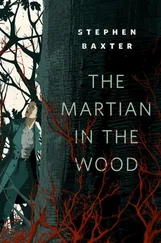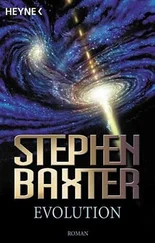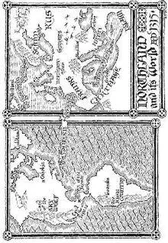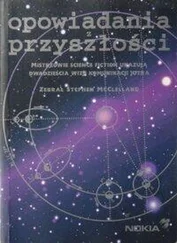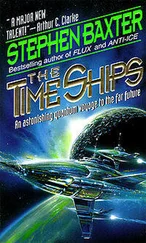I woke once more, nagged by another anxiety. I got out of bed and rummaged through my stuff until I found, sitting on a dresser, Walter’s drawings in their leather packet, which had proven waterproof as well as robust; they were safe. I slept again.
25
THE VILLA OF THE CYTHEREANS
I woke again, later in the day, feeling much refreshed.
It was a relief to shed a nightgown that felt as if it had recently been used by a lady several decades older than me, to climb out of sheets so musty that the dust I raised when I turned over started me sneezing. But I can’t blame Verity for not trying to change a bed for me with her broken arm – and, it seems, her ‘Cythereans’, while willing to help, would not venture into the house. And it was a relief to wash, with Verity’s help, to dress in my own clothes.
Then I sat with her on a small veranda, gulping down Indian tea we found in a sealed caddy – delicious treat! – and corned beef and tinned peaches. The veranda itself, a paved area bounded by waist-high pillars and a couple of concrete lions, was the kind of pretentious but unremarkable feature you might have associated with such a property, a late addition to what I judged to have been originally some kind of gatehouse or lodge for a larger estate.
The whole was quite ordinary – or would have been if not for the Misbourne flood. On our doors and walls you could see the stains of surges, and you could smell a kind of rotting dampness throughout the house, the carpets and rugs uniformly mouldy. But the house was set on a slight rise, as many old properties are, so that when the flood had risen much of the house itself was left on an island, set in a shallow lake from which protruded hedgerows and telegraph poles, and the upper floors of other, less favoured properties. It was a strange, wistful, oddly peaceful scene, as if from a romance of some distant future when our civilisation had decayed and its remnants were slowly subsiding into a life-choked marsh.
But the colours of that landscape were odd – peculiarly Martian, as it turned out. The open water was uniformly choked by the red weed, which spread across its surface as would water lilies, while the ground, relatively uncolonised, retained the green of the earth, of the grass and the trees. Red lakes and oceans, green continents: just as the astronomers tell us they see of Mars.
And if the landscape was unearthly, so were its inhabitants. As we sat there, for the rest of that day and into the evening, with faded blankets on our laps, eating tinned fruit and drinking tea, Verity and I watched the Cythereans at play. They would swim languidly, or rest, rolling on their backs with their hairy bellies tipped up to the clouds. And then they would dart away, flashing down into the water and emerging with a mouthful of the red weed. It was evident to me immediately that they had the power and quickness and acuity of senses of the natural hunter, but there was nothing palatable for them to hunt in the murky waters of the earth. Only the red weed, which had been brought with them in the cylinders from Mars, would fill their stomachs. But, oh! – what a sight it was to see those lean bodies flash through the water, so very like seals when they were swimming, but with those eerily human faces on their sleek, streamlined heads. The young, too, for there were a handful of those, darted with abandon, and when their tiny forms surfaced with some prize from their play-hunting, a vole or a halfdrowned rat, they would laugh with glee and clap their hands, and the two of us clapped with them – they were very like human children. When they rested they would gather in small groups, in couples or bands of three or four. The children would snuggle with their parents, or they would clamber up on their backs and bellies; the very smallest suckled at their mothers’ small breasts, and with teeth sharp enough for the hunting that must have nipped painfully. I was tempted to label these groups as families, but the experts will tell you that one should not anthropomorphise. Those who have not seen Cythereans in the wild cannot know how graceful they are in their unfettered, uncontained state – how elegant at play. And if I use the word ‘play’, it is because that is how they seemed to me, with every motion, every gentle interaction having a sense of fun, just as you will see with otters and seals and perhaps dolphins, the intelligent aquatic mammals of the earth.
Verity, having been a prisoner in the Cordon for two years, knew far more about her fellow captives than I did – and, of course, more than anybody else outside the Cordon. In the years since we have had time to study the Cythereans more fully, both in the wild and in captivity (in those nations where the imprisonment of evidently intelligent beings as laboratory specimens is tolerated), and it is the Swedish physical-chemist Arrhenius who has led a multidisciplinary study into the nature of these creatures, and of their origins.
To begin with, we can be sure that the ‘Cythereans’ we saw in the Cordon were indeed from Venus. The most convincing evidence for me is the anatomical. The strength of a Cytherean’s skeleton is only a little less than a human’s, thus evidently adapted to Venus’s marginally lighter gravity. By comparison the skeletal structure of the Martian humanoids, adapted to a gravity of a third of earth’s, is enfeebled to the point of delicate. Nature makes us no more robust than we need to be. Meanwhile Venus is closer to the sun, and the brilliance of the daylight seems reflected in the smallness of the Cytherean eye, and a certain resistance of the skin to the sun’s rays. Conversely again, Mars is half as far again from the sun as the earth. To us, Mars would be twilit; the Martian humanoids have big receptive eyes and are easily dazzled.
(The commonality of the hominid form across the worlds remains a puzzle, by the way. Some argue for a convergence of form to similar environments, just as a dolphin, a seabound mammal, has come to resemble a shark, which is a fish. Others posit older migrations, long preceding the Martians to the earth; perhaps the Jovians – or even the inhabitants of lesser but still older worlds, Saturn or Uranus or Neptune – have visited our young planets before, and left a kind of imprint of design. But the deeper differences, even of the use of different structural materials for the skeletons, seems to argue against that. A wistful mystery! Are we interplanetary cousins, or not?)
Venus, according to Arrhenius, is warm and dripping wet: a world of swamps, full of water in the sky, on the land. It is not a world so much as a vast lagoon. The surface temperature is probably twenty or thirty degrees hotter than the Congo, and the humidity six times the earth’s. This heat creates immense stacked clouds, piling up miles above the surface and laden with water vapour. We cannot see through the clouds to the surface of the world, and the Cythereans can never see the stars. But Venus is a bright world; the sky must shine uniformly when it is day.
The Cythereans are ideally adapted to their world. Their aquatic modifications are more than superficial – more than the webbed fingers and toes, the neatly streamlined coat of hair. They have strong voluminous lungs which can store air even when collapsed under the pressure of a weight of deep water. They have gills, which I had observed on my first encounter with Charlie. And, more subtly yet, they have three hearts , one to circulate the blood around the body and two supplementary organs which keep the blood flowing through the gills, where oxygen is extracted from the water to feed the blood. I am told the octopus on the earth has a similar adaptation.
So thick is Venus’s cloud bank that the heat must be spread uniformly from equator to pole – and, say some of Arrhenius’s followers, so must the vegetation types be uniform. On a world without geographic or seasonal variation, evolutionary innovation, they say, must be deterred. Venus may be a world of simpler, duller types than our own – fern swamps inhabited by slow-moving herbivores, perhaps, across a changeless world. But others point to the evident intelligence of the Cythereans themselves – they are perhaps as intelligent as Neanderthal Man, some have opined. They are hunters and tool-makers, though the latter behaviour is inhibited by the available raw material; on Venus, stones that might have made Mousterian hand-axes are buried beneath miles of rotting vegetation in the swamp. Some commentators have suggested that they are essentially aesthetes: their intellect focused not on the striving that characterises humanity, but on the sheer athletic pleasure of the swim, and the competition and company of others.
Читать дальше

